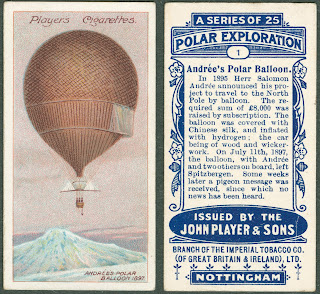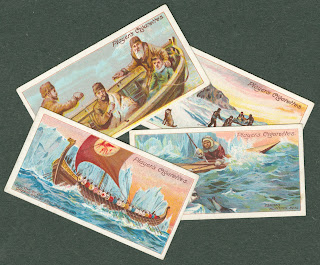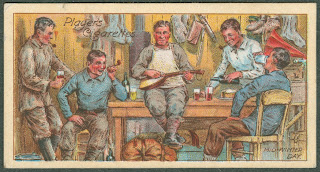 Sometimes, as we get older it is easy to forget the excitement of mystery, but in Rauner we have countless items that recapture that childhood imagination—like the Player's Cigarette Cards. The cards, which came with Player's Cigarettes, each feature a different representation of Arctic exploration: from explorers to ships and the formation of Icebergs, every card tells a short story about the frozen ends of the Earth.
Sometimes, as we get older it is easy to forget the excitement of mystery, but in Rauner we have countless items that recapture that childhood imagination—like the Player's Cigarette Cards. The cards, which came with Player's Cigarettes, each feature a different representation of Arctic exploration: from explorers to ships and the formation of Icebergs, every card tells a short story about the frozen ends of the Earth.One of my favorite of the cards features "Andrée's Polar Balloon." It describes Herr Salomon Andrée, who raised money for his Polar hot air balloon, made from Chinese silk and filled with hydrogen. A few weeks after his departure, a pigeon message was received, after which nothing was heard from him again.
The mystery lies not only in each story, but also in the story of the cards' circumstance: who collected these cards? Were they meant for kids, despite their being contained in cigarettes cartons? What is the connection between cigarettes and polar exploration?
If you come by Rauner and ask for Realia 536 you can find out the answers to some of these questions, but even more importantly, you can look at these beautiful cards and discover questions of your own!
Posted for Lucy Morris '14






